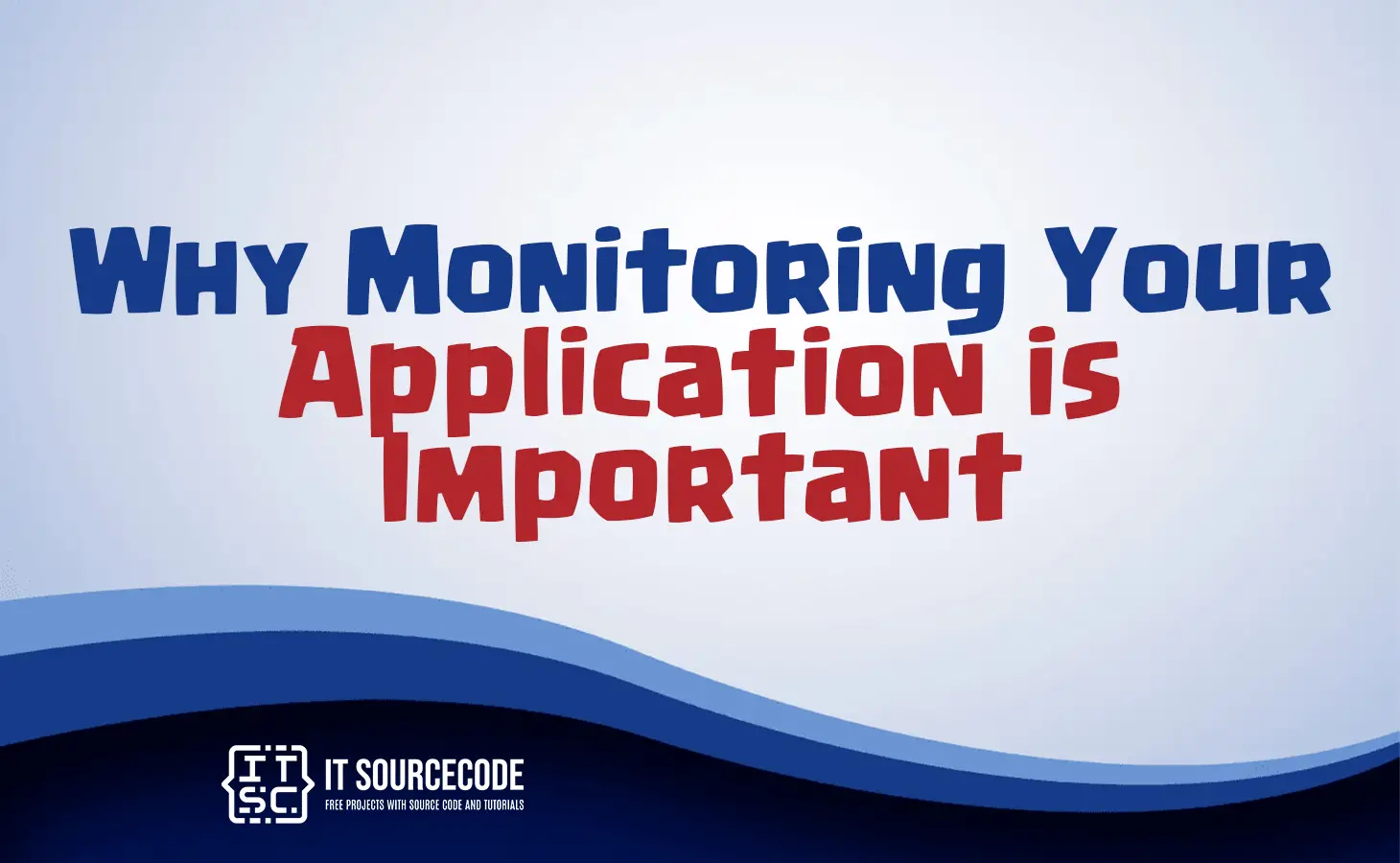WHY MONITORING YOUR APPLICATION IS IMPORTANT – In this article, we delve into the misconception that IT systems are self-sufficient, particularly with the rise of cloud-based solutions that demand minimal installation.
We’ll explore the significance of actively monitoring and managing IT systems to ensure peak performance and steer clear of potential issues.

Why monitoring your application is important?
In IT operations, figuring out why an application stopped working is complex as it relies on various supporting services and hardware. Monitoring applications provide two main advantages: predicting performance issues and identifying system dependencies.
Problems in IT often evolve over time, and sudden application performance issues may be due to underlying service problems that have been developing.
Hence, a monitoring system enabling root cause analysis is essential for effective investigations. Continuous automated application monitoring also helps identify gradual performance degradation before it becomes apparent.
Application monitoring obligations
Applications cater to a diverse range of users, encompassing internal users in a company, other businesses, and the general public.
When an application’s performance is subpar, it can lead to user dissatisfaction and the risk of breaching service level agreements, which could incur financial penalties.
In addition to immediate financial implications, persistent poor application performance can also have detrimental effects on a company’s reputation over time.
Businesses have high expectations for their supported applications, requiring them to be consistently accessible during business hours, and potentially even around-the-clock.
Application monitoring delivery models
Effective application monitoring requires centralized solutions to avoid technicians needing to access individual servers.
For applications serving external users, an internet-accessible monitoring system provides a more accurate performance representation than internal monitoring.
There are two hosting options: on-premises and cloud-based, with minimal differences as both rely on data transmitted across networks.
Regardless of the type, monitoring tools must handle hybrid environments, allowing on-premises systems to track remote and cloud-based modules, and SaaS packages to examine local network and other cloud-based services.
Application dependency mapping
In the modern IT environment, just listing applications in a monitoring tool is insufficient. Autodiscovery is crucial as it allows the tool to identify unnoticed applications and services automatically.
Applications are complex systems with multiple layers and dependencies on server resources.
For instance, a website using a content delivery network (CDN) for advertising or various plug-ins in WordPress requires monitoring of multiple elements.
Performance issues in user-facing applications can stem from poor server performance or connection problems between servers. Discovering the precise locations of these servers and the supported application modules is essential for effective problem-solving. Auto discovery and mapping play a significant role in pinpointing the root cause of performance issues in applications.
Microservices and mobile offloading
Mobile applications used for business services often depend on a variety of microservices, which may originate from in-house development, custom work by a Web application consultancy, or white-labeled third-party solutions. Development toolkits have accelerated web application creation through standardized features like drag-and-drop elements and picklist management. Every time users interact with the site or mobile app, these functions are activated.
Distributed tracing and code profiling
Supportive APIs, plug-ins, content delivery networks, and content management systems have simplified web application development but present monitoring complexities.
Traditional monitoring tools cannot capture log messages from these systems if they are not generated, and limited control exists over internal reporting as they are externally developed and hosted.
Fortunately, web systems coded in plain-text programming languages can employ code profiling to examine code flow from the web server to the browser.
Telemetry systems have emerged to address monitoring challenges with third-party microservices, as serverless providers incorporate messaging to produce progress reports adhering to industry standards like OpenTracing, OpenCensus, and OpenTelemetry.
Telemetry-generated messages are collected by monitoring tools known as distributed tracing services. By integrating code profiling and distributed tracing, the obstacles of monitoring third-party microservices are overcome, and application dependency mapping aids in identifying their locations and contributions to your applications.
Application performance monitoring systems
For successful application monitoring, automation is essential. Trying to manually observe each module becomes impractical due to simultaneous instances and interactions with other modules. An automated application monitoring tool guarantees continuous and consistent performance tracking.
Moreover, a tool capable of generating and maintaining an application dependency map concurrently offers a valuable time-saving advantage. Choosing a tool with hybrid monitoring capabilities will comprehensively address all your monitoring requirements.
The Best Application Monitoring Systems
We prioritized tools with free trials or demo packages for cost evaluation and comprehensive mapping, tracing, and monitoring features at a reasonable price.
Using these criteria, we found exceptional application monitoring services that stay up-to-date with the latest technology and provide predictive alerts to prevent issues proactively.
- AppOptics – includes full dependency mapping and root cause analysis, along with distributed tracing and code profiling.
- MAM (ManageEngine Applications Manager) – this offers a tracing and monitoring for it’s user-facing applications and supports multiple platforms.
- Datadog APM – offers optional features such as dependency mapping, root cause analysis, and distributed tracing.
- Dynatrace – is an AI-based SaaS package with comprehensive full-stack monitoring abilities.
- New Relic – stands out for its innovation, providing 16 monitoring packages under a single price.
Conclusion
In summary, assuming IT systems are self-sufficient, especially with cloud-based solutions, can have serious consequences. As an IT manager, actively monitoring and managing your applications is crucial to avoid business disruptions and financial losses. We’ve compiled a list of the top five application monitoring systems, each with unique features to ensure peak performance and productivity for your business.

